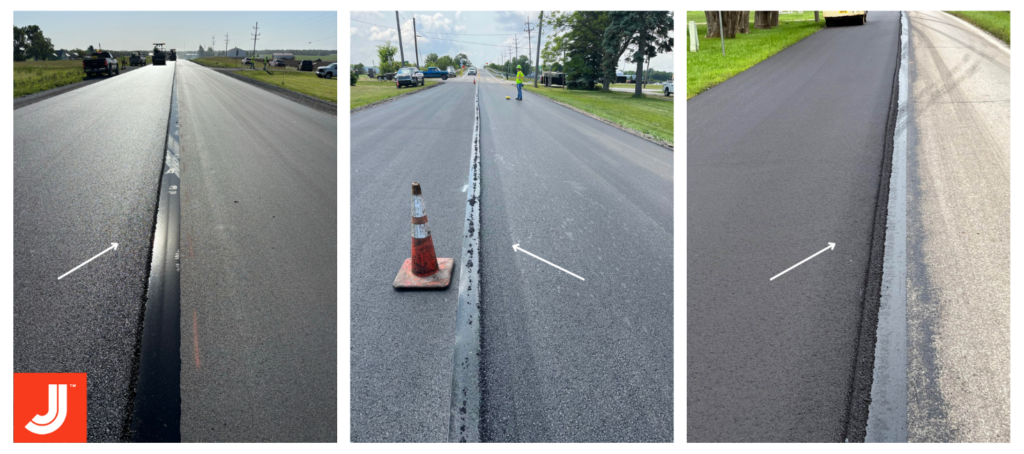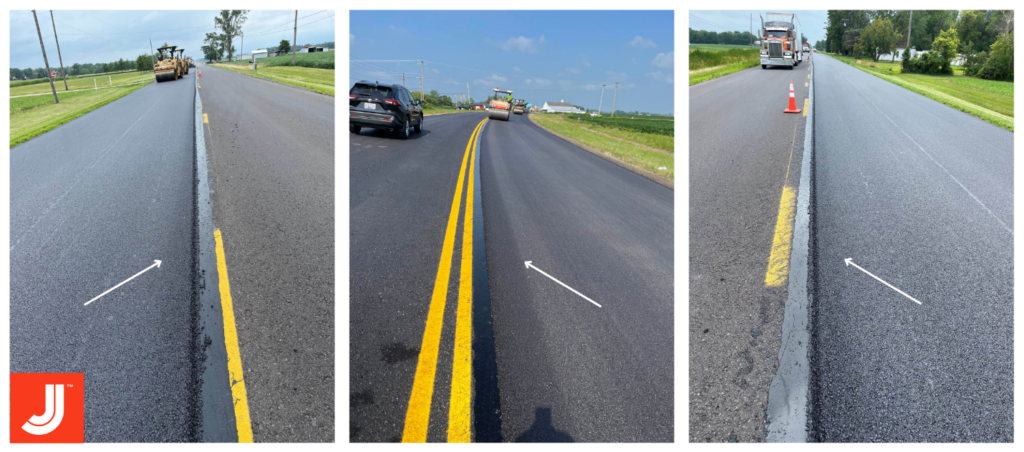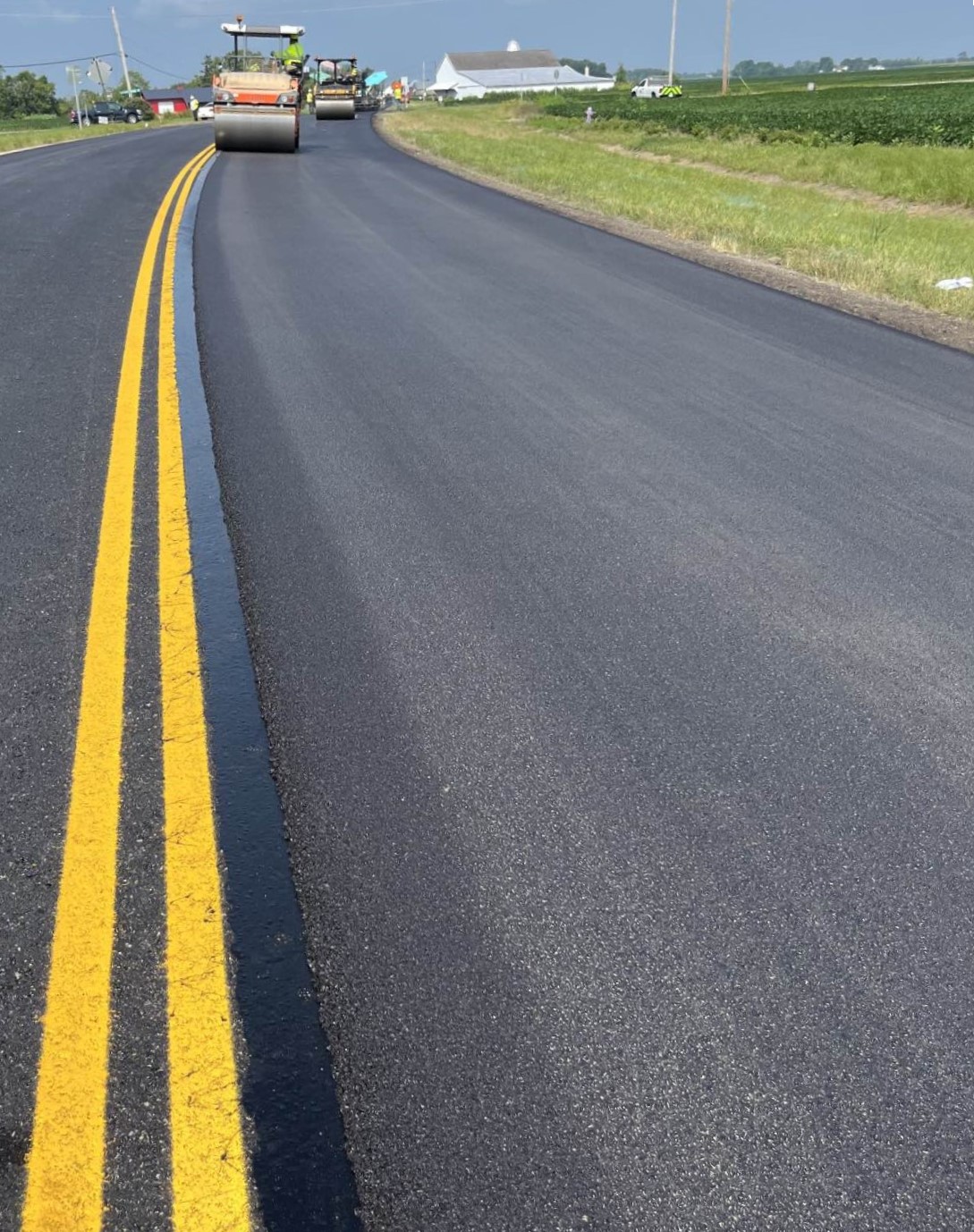The Shadow
Take a close look at a hot mix asphalt (HMA) mat paved over J-Band. In the right circumstances, there is a shadow that appears. Above the band where the J-Band was laid, the HMA mix often appears visibly darker after the rolling operation. Why does this happen and what does it mean? It has to do with compaction.

Density Requirements
Asphalt pavement roadways must be properly compacted to ensure long-term pavement performance. The average target for HMA density is between 92-94%. Every road contractor knows the importance of these density requirements. If pavement has a lower density, it has a greater volume of air voids that collect water and air, causing premature weakening, cracking, rutting, and raveling of the structure.
Vibratory rollers are often used to compact the material to the required density. However, this can fracture the aggregates on the top of the mat in the process. The final surface is characterized by broken rock which leaves small cracks for water to intrude and cause damage over time.
J-Band’s Shadow at Work
So why is the centerline band darker where J-Band is applied? Due to the heat of the final HMA application and the pressure of the compaction rollers, J-Band migrates upward through the HMA mat, filling air voids and making the structure impermeable.
As the rollers make their passes over the mat to achieve the required density, J-Band cushions the pavement, including the top aggregates, from the pounding of the rolling operation. Essentially, it acts like a pillow for the HMA on top, cushioning the blow so that not as many surface aggregates are fractured. Because of this cushioning, fewer rocks are cracked, making the surface appear darker.
Water can settle in the little cracks made by the rolling operation. However, with J-Band, the benefits are twofold. Fewer cracks are made and, as J-Band migrates to the top, it fills air voids protecting the joint.
The Proof is in the Pavement
The shadow is immediate proof of J-Band doing its job. While it is not visible on every application due to environmental variances, J-Band has a proven track record of success. This premier void reducing asphalt membrane (VRAM) is unlike any other treatment. It significantly reduces air voids in longitudinal joints from the bottom up – literally. This not only extends the life of the joint but improves the performance of the entire pavement. For J-Band, shadows are a good omen.

Learn More
For a closer look at projects that have applied VRAM during construction and to discover its benefits in terms of time, money and safety, you can explore our interactive map here.
Editor’s Notes:
J-Band® is a registered trademark of Asphalt Materials, Inc. J-Band was created in the labs of the Heritage Research Group (HRG) and is a product of Asphalt Materials, Inc. (AMI).

